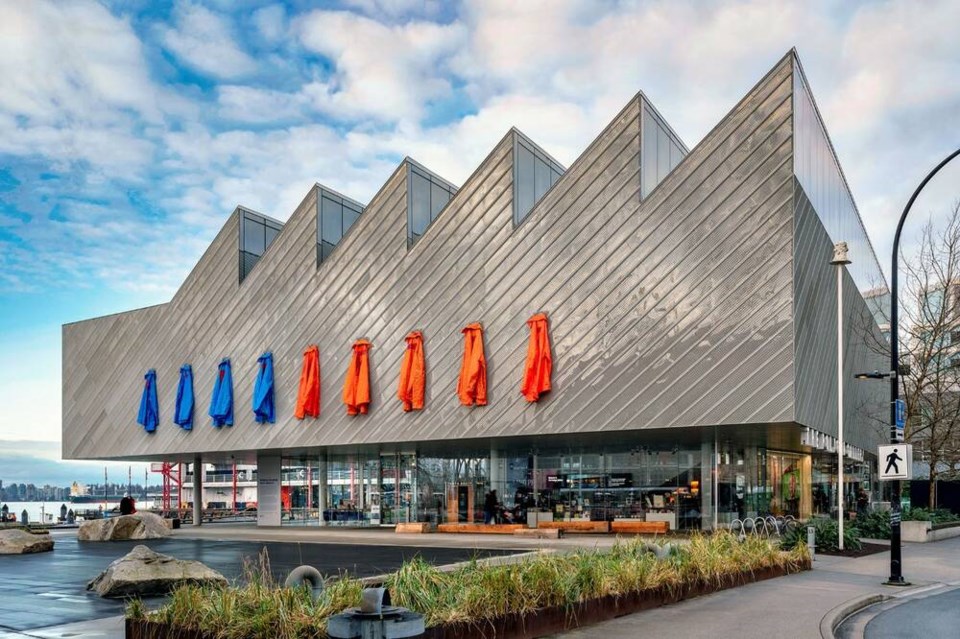A duo of new sculptures honouring those who endured the residential schooling system have been unveiled at The Polygon Gallery.
Perched atop the gallery’s east-facing facade and comprising a collection of blue and orange tarpaulin shirts, the main sculpture, titled Hacer Memoria, encourages visitors to honour the First Nations, Inuit and Metis communities and consider truth and reconciliation efforts as they are welcomed into the art space.
Gallery curator Helga Pakasaar said the “powerful” piece will assert a “bold Indigenous presence” on the North Vancouver edifice, and will “undoubtedly have a resounding impact” on all those who visit.
“Rebecca Belmore has adeptly brought into public view timely concerns that are especially relevant to local communities,” she said.
“Open to diverse interpretations, Hacer Memoria provokes urgent questions of our time.”
The title of the piece comes from the Pope’s penitential speech made during his 2022 visit to Canada, during which he acknowledged the devastating impacts of residential schools. Hacer Memoria, uttered often during the speech, means “try to remember.”
It is a message conveyed through the shirts themselves, each of which is emblazoned with a letter to make up the word “hereafter” when joined together.
In bright blue and vivid orange, the shirts represent the school uniforms the children wore and the resilience of the survivors – a nod to Orange Shirt Day, now , instigated by the accounts of survivor Phyllis Jack Webstad.
The colours also ensure the shirts are visible near and far, eye-catching to those who enter the gallery and those simply idling past. Designed to interact with whatever weather is at play, the nine individual pieces shine brighter in the sun and billow when it’s windy – an important facet of Belmore’s sculpture creation process.
“Rebecca Belmore’s art often references wind, water, and land, and in this new work she is responding to the site of The Polygon Gallery on unceded Indigenous territories of the Burrard Inlet,” said curator Helga Pakasaar.
“Facing east into the unknown, the seemingly fragile shirts suggest the absence of bodies, giving a sense of erasure and vulnerability to the passage of time.”
Describing Belmore’s work as provocative, Pakasaar said the piece reflects on how the “politics of memory” impacts Indigenous lives.”
A second installation, entitled Severance, awaits guests in The Polygon’s stairwell. Curated from dark, plastic mesh tarpaulin, the piece is designed to be reminiscent of long black hair – a reminder of the cuts to their hair all new students of residential schools had to endure.
Both Severence and Hacer Memoria will be on display for six months.
Mina Kerr-Lazenby is the North Shore News’ Indigenous and civic affairs reporter. This reporting beat is made possible by the .




